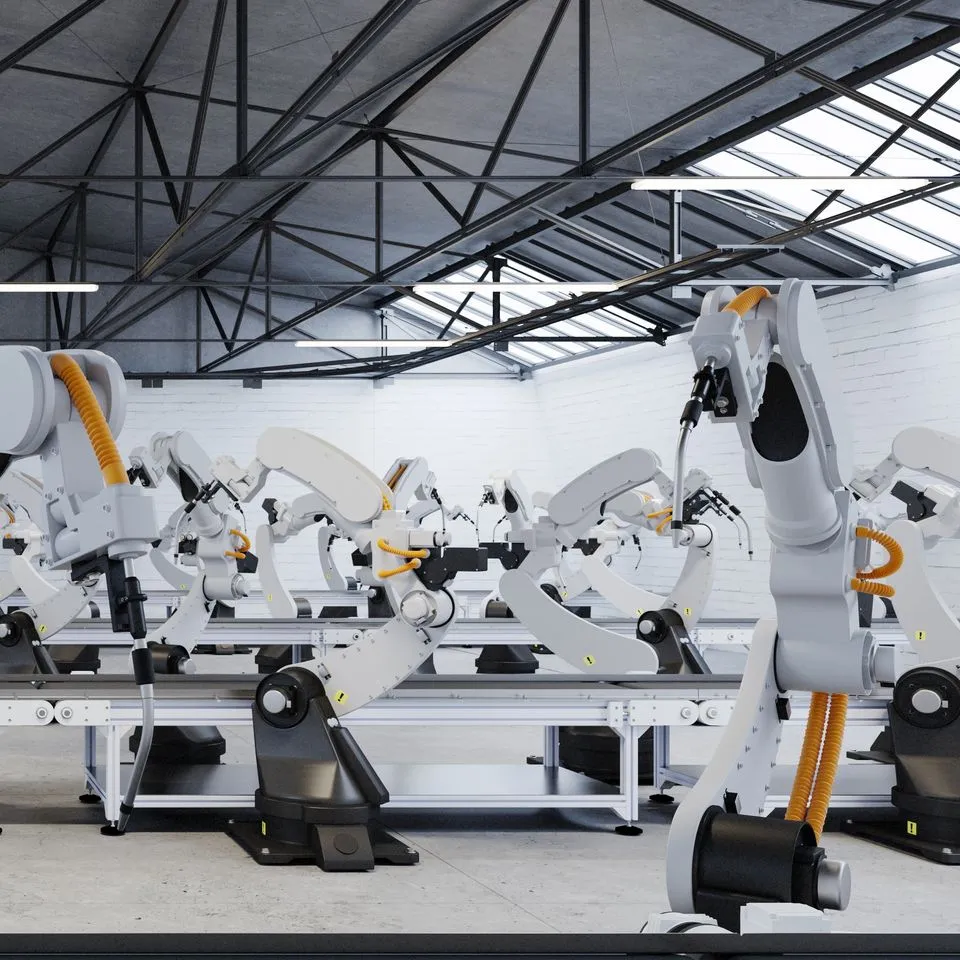Last Mile Fleets: When to Electrify


Last Mile Fleets Are Poised To Lead The Commercial Electric Vehicle Transition
Last mile fleet early adopters stand to reap significant benefits from electrification
If you operate a last mile fleet (LMF), we recommend you start planning now to reap the benefits of early adoption in the transition to electric vehicles (EVs). This article looks at the many advantages as well as the steps involved in facilitating the transition.


An unprecedented opportunity
Now is a pivotal time for commercial fleets. This is especially true of LMFs — because of their relatively short daily hauls and return-to-depot patterns, they stand to benefit most from the current state of battery technology. State-of-the-art lithium-ion batteries for vehicle energy storage can provide around 100-150 miles for a 14,000-20,000 pound (class 4-5) gross vehicle weight truck under adverse (cold) conditions. ¹What’s more, EVs achieve their best fuel economy during the stop-and-go driving habits typical of LMFs. ²For those LMF operators willing and able to invest, a historic opportunity exists for vaulting ahead of the competition. As a recent U.S. Department of Energy publication ³noted, early adopters may benefit from a number of advantages, including:
- Favorable government policies and incentives. Some governments are subsidizing the EV evolution with line extension allowances to help utilities fund the extension of electrification to their customers. Fleet companies in close conversation with their energy providers can take advantage of these allowances by aligning their EV transition with the utilities’ plans for building capacity. Also, state and federal government incentives for rolling stock and electric vehicle supply equipment (EVSE) will lower total cost of ownership (TCO) to levels comparable with the TCO of internal combustion engine (ICE) fleets.
- A future-proofed fleet plan. Utilities worldwide are poised to create a grid that can support a massive EV rollout. Early EV fleet adopters who establish close relationships with their utility providers will be positioned to smoothly integrate their fleet plans with the utilities’ long-term forecasts and planning processes, benefiting from upgraded services, utility incentive plans and low electricity prices — which are predicted to increase as the world electrifies.
- Faster, more cost-effective conversion. Companies that are among the first to electrify their fleets may be able to utilize excess grid capacity, which is excess load baked-in by the utility as a buffer for future growth. Later adopters may find that the electric capacity they need is insufficient to power their fleets and may end up bearing the financial burden of new feeds or substation upgrades, lengthening conversion timelines and increasing TCO.
- Reduced maintenance and operating costs. Replacing ICE with EV components radically reduces maintenance costs associated with engine repair⁴, operating costs associated with oil changes, and transmission repair and fuel costs.
- Improved driver experience. EVs drastically reduce noise and carbon emissions while simultaneously improving performance such as torque, power and acceleration⁵.
- Route improvements. Some states and municipalities allow EVs to use high-occupancy vehicle (HOV) lanes, access enhanced parking and charging, and offer a myriad of other benefits.
Still, planning the transition of a fleet of commercial vehicles to EVs is a daunting task. But even the longest journeys can be made smoother with a clear road map to guide the way. To ensure that your organization makes a successful transition to EVs, Hitachi recommends this three-phase plan:
1. Getting started: Governance and goal setting
The first step of the planning process is also the most important: obtaining executive sponsorship for decarbonization and electrification. Without executive support, budgets supporting the EV transition are not likely to materialize. This step is so crucial that it’s pointless to proceed with the planning process until you’ve gained executive buy-in.
Next, it’s important to determine an appropriate mix of decarbonization projects that deliver an optimal balance of costs-versus-efficiency gains and operational needs. The ultimate motivation for the transition to EVs is typically the reduction of carbon emissions. Developing a comprehensive, organization-wide view of all your options for reducing carbon emissions — installing LED lighting or energy-saving HVAC, for example — will clarify the extent of the carbon-reduction burden that must be borne by your fleet.
The next step in this phase is setting decarbonization goals for your organization as a whole. Because of the groundwork you’ve completed, you’ll know the exact amount of fleet operations that must contribute to carbon reduction goals. To set your goals:
- Calculate, or at least approximate, the total portion of organizational CO2 that comes from fleet operations.
- Specify the percentage of carbon you’ll need to reduce from that total to meet your sustainability goals.
- Gain executive buy-in for these goals.
- Publish the goals internally to help motivate your organization’s employees.


2. Building your road map: Planning and design
During phase two, your planning process will encompass both fleet planning and distribution planning. Fleet planning focuses on researching fleet and infrastructure providers to determine standards for specific needs such as battery range, data (and analysis), charging speed and load management. Data acquired during the fleet planning process helps in determining financing needs and in building your TCO model.
Distribution planning necessitates cultivating a relationship with your electric utility — and involving them early in the process is important. You may find that grid capacity limitations ultimately play a critical role in the planning and implementation of your road map.
In addition to fleet and distribution planning, the following set of tasks should be completed during phase two:
- Plan for grid failure and battery drain. Consider installing a microgrid to enhance resilience. Also consider purchasing mobile chargers for jumping dead batteries.
- Select vendors, such as suppliers of rolling stock (whether purchased or leased), EVSE providers, and the organizations that will install and maintain your infrastructure. Hitachi makes this process considerably easier by providing a turnkey program that covers all fleet and depot needs, including financing.
- Determine whether your electrical infrastructure requires upgrades to support the additional capacity needed for EVs. Be aware that electrical infrastructure upgrades that reach back to the substation can be costly and may take as long as 18 months to implement. A site survey will also act as a guide for the selection of a pilot site and help pinpoint the EVSE you’ll require.
- Consider implementing an energy management system. Doing so helps you measure and demonstrate progress made toward decarbonization goals.
Finally, complete your 2025/2030 plan and road map, and petition your governance to obtain the budget and timing for your transition. You’ll want to specify a pilot site or fleet to prove the overall concept. Choose this site or fleet wisely. Variables will include whether the site has a strong champion, the right daily mileage characteristics, a reliable electric supply and more.
3. Putting it into action: Implementation and monitoring
Phase three is where the electrification of your fleet comes to fruition. While this phase is where most of the work occurs, it’s an exciting part of the process and doesn’t have to be overwhelming. You’ve already planned and vetted the work to be done — now it’s just a matter of doing it. That work includes
- Ordering rolling stock.
- Constructing site and grid assets.
- Operating fleet and energy assets.
- Managing maintenance and warranties for both rolling stock and EVSE.
- Monitoring real cost and performance against estimated expectations.
Throughout this phase, you’ll verify the validity of your transition plan road map, tweaking as needed to accommodate unforeseen circumstances.
Finding the right partner for LMF electrification
Both for the environmental benefit to our planet and the financial and competitive viability of your company, the time to begin planning a fleet transition to EVs is now. LMF operators can both plan and execute the transition to EVs today. There’s never been a better time, and the window of opportunity won’t be open for long.
The phases we’ve outlined here provide a clear strategy for proceeding. But how do these general guidelines translate into success for you?
Transitioning from a fully ICE fleet to an EV fleet can seem daunting, especially since this is a transformational journey that will take time, resources and commitment. Hitachi’s deep experience in transportation, energy, digital technologies and manufacturing can help ensure that your ICE to EV journey is successful. Stay ahead of your competition and start reducing your TCO by beginning the planning process for your fleet’s transition to EVs now.
¹Estimates based on information from:
Jody Muelaner, “EV battery technologies: From the state of the art to the future energy stores,” Battery Power Tips, February 24, 2022, https://www.batterypowertips.com/ev-battery-technologies-from-the-state-of-the-art-to-the-future-energy-stores-faq-2/ and Jim Park, “What Fleets Need to Know about Electric-Truck Batteries,” Truckinginfo.com, April 11, 2022, https://www.truckinginfo.com/10166691/what-fleets-need-to-know-about-electric-truck-batteries
³“An EV Future | Navigating the Transition,” U.S. Department of Energy, October 2021.
³“An EV Future | Navigating the Transition,” U.S. Department of Energy, October 2021.
³“An EV Future | Navigating the Transition,” U.S. Department of Energy, October 2021.
³“An EV Future | Navigating the Transition,” U.S. Department of Energy, October 2021.
⁴Allison Barfield, “5 Reasons to Change Your Mind About Electric Trucks,” MotorBiscuit, May 21, 2021, https://www.motorbiscuit.com/5-reasons-change-mind-electric-trucks/
⁵ Ibid



